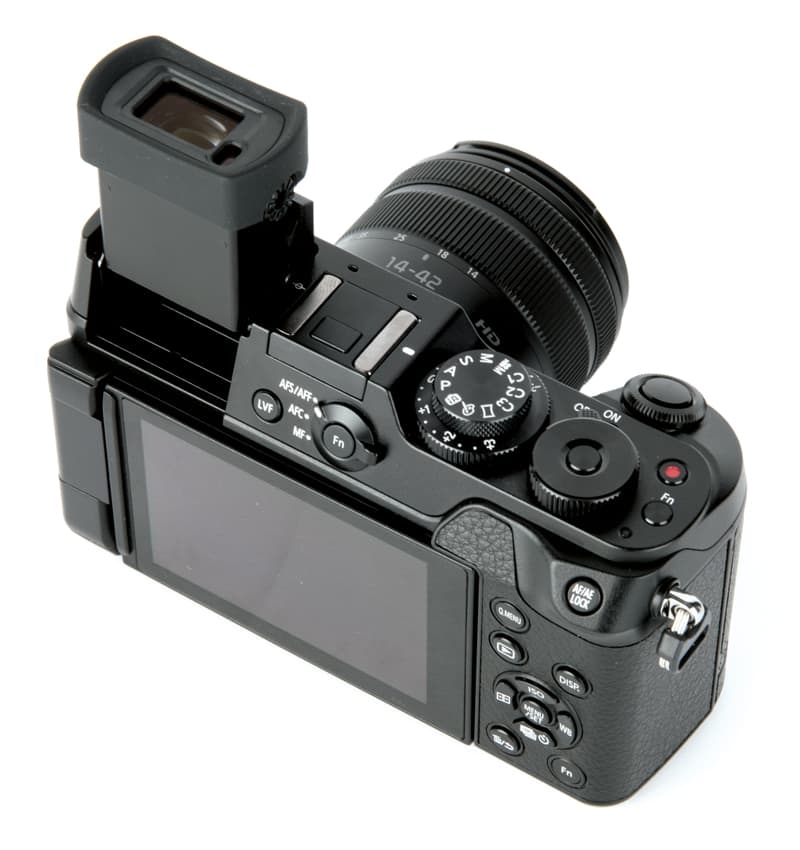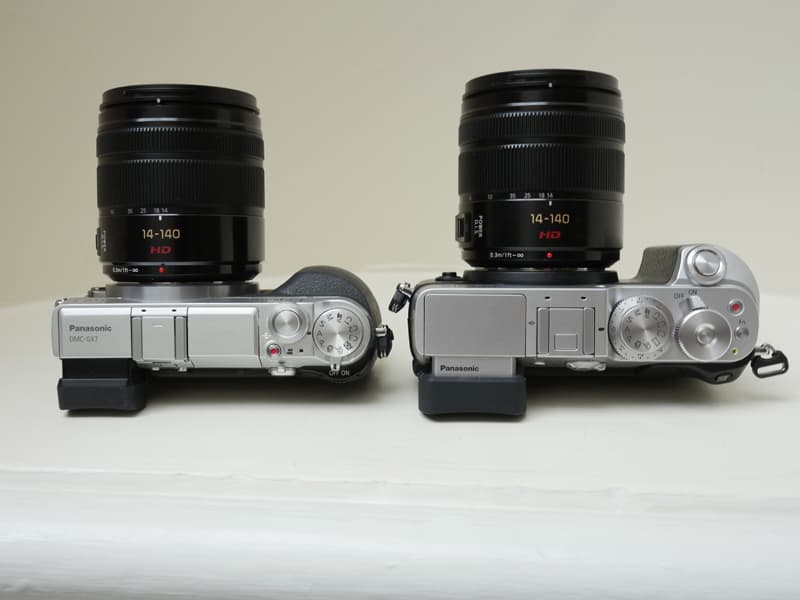https://link.brightcove.com/services/player/?bctid=4357208935001
Panasonic Lumix DMC-GX8 at a glance:
- 20.3MP Live MOS sensor
- 3in, 1.04-million-dot OLED touchscreen
- 4K video recording
- 7fps continuous shooting
- 2.3-million-dot OLED EVF
- ISO 150-25,600 (extended)
- Price £1049 (body only)
See our sample image gallery of the Panasonic Lumix DMC-GX8
At the top end of Panasonic’s compact system camera range sits the DSLR-styled, video-equipped Lumix DMC-GH4, but seeing the popularity of rangefinder-styled CSCs from the likes of Sony and Fujifilm, Panasonic completely overhauled its GX1 in 2013 to produce the GX7, a high-end, enthusiast-oriented, rangefinder-styled alternative to the GH4 – throwing in the world’s first tiltable built-in EVF on an interchangeable-lens camera to boot.

The newly announced Lumix GX8 may not be as radical a rethink as its hugely successful predecessor, but it still features a new body design, new screen, new EVF and a brand-new 20.3MP sensor, so to all intents and purposes the GX8 is a completely different camera to the GX7.
Bucking the trend towards camera shrinkage, the GX8 is actually larger than the GX7, and more than 20% (85g) heavier.
In fact, it looks rather like a scaled-up LX100. The most obvious physical modification is in the handgrip, which is now much deeper and more pronounced and, therefore, more comfortable to hold. The 3in touchscreen is now an OLED unit and no longer just tilts up and down, as it also swings out from the body to offer full articulation.
While this may seem like an improvement, especially when shooting in portrait orientation, urban and street photographers may find that the new design makes discreet shooting from the hip more difficult, since the screen becomes visible to all. However, most other photographers, including portrait and macro photographers, will most likely prefer the new screen.
The EVF is new, and much bigger compared with the GX7. It still pivots 90°, but it offers a greater magnification of 0.77x (up from 0.70x), making it one of the largest EVFs currently available and matching those on cameras like the Fujifilm X-T1 and Sony Alpha 7R II. It too is now an OLED (with 2.3 million dots) and should therefore be immune to the rainbow ‘tearing’ that beset the GX7’s field-sequential LCD. According to Panasonic it is also much sharper at the edges and corners.

The range and configuration of the top-plate dials have had an overhaul. A physical exposure-compensation dial makes its debut on a Lumix CSC, in a double-decker arrangement below the mode dial that is not unlike that on the Canon G7 X. On the GX7, exposure compensation was set using a small dial inset into the back of the cameras, but on the GX8 this dial has been replaced altogether with a chunky input dial on the top, in the middle of which sits a customisable button that changes the dial’s function – one of many such customisable buttons dotted around the camera.
The entire body is now dust and weather-sealed, which, combined with the magnesium-alloy construction, creates a camera that looks and feels a little more premium than the GX7 – and indeed the GH4. It feels good in the hand, with the exposure-compensation and rear-input dials easily reachable by the thumb and stiff enough not to be knocked too easily. The shutter release is right where you’d want it to be on the top of the grip, although it’s a bit of a stretch to reach back for the video-record button. The three-position focus-mode switch is conveniently located directly behind the hotshoe, while the range and placement of function buttons make the set-up configurable for most users’ needs.
Despite the increased size over the GX7, Panasonic has not seen fit to retain the built in pop-up flash on the GX8, although there is still a hotshoe for the addition of an external flashgun if required. However, while this includes the additional contact that’s used to power the small flash that comes with the GM5 and LX100, the GX8 doesn’t appear to ship with one at all.
At the heart of the GX8 a brand-new 20.3MP Live MOS sensor makes a long-awaited debut, finally breaking the 16MP resolution ceiling that the G series has had since 2011. Speaking of resolution, the GX8 continues Panasonic’s mission to convert the world to 4K video, with 3840×2160 recording at 24fps or 25fps, as well as Panasonic’s 4K photo mode. This enables 8MP JPEG images to be grabbed easily from short bursts of 4K video using one of three modes: burst (where the shutter is held down); start/stop (press to start, press to stop); and pre-burst, which records one second before and one second after the moment that the shutter is pressed – which is clever, but it drains your battery if you use it a lot. Frames can be selected and saved as JPEGs either in the camera or using the software later.
Despite offering an extensive range of image-stabilised lenses, the GX7 introduced in-body image stabilisation to the G-series range for the first time, enabling users to reduce camera shake with Panasonic’s non-IS lenses as well as Olympus and other Micro Four Thirds lenses, and legacy lenses via adapters. The GX8 goes one better by offering dual IS when image-stabilised lenses are used, in which the 4-axis IS on the sensor and the 2-axis IS in the lens work together. Panasonic claims that this combination makes the GX8 as effective as the 5-axis stabilisation used by Olympus, although it lacks the latter’s rotational correction. We’ll be keen to test this claim, especially with video shooting when we get a review sample.
Panasonic has more than doubled the number of focusing points on the GX8 from 23 to 49, and contrast AF focusing time is claimed to be reduced to 0.07sec. As with its predecessor and most other cameras in the G series, focusing points can be manually selected by tapping the touchscreen.
Burst shooting speed has also been increased from 5fps to 8fps using the mechanical shutter. It’s also possible to shoot at up to 40fps in super-high-speed mode using the electronic shutter, but this is JPEG only.
Some of the additional new features added to the GX8 include enhanced time-lapse and stop-motion modes, tethered shooting via USB, and password-free Wi-Fi and NFC connectivity.
 See our sample image gallery
See our sample image gallery
Shooting video on the Panasonic Lumix DMC-GX8
Video can be recorded on the GX8 in a choice of MP4 or AVCHD formats, with 4K restricted to the former, at either 24fps or 25fps and 100Mbps. Full HD recording at 50p is also possible. A 2.5mm mic input is provided, with manual audio level control, but no headphone output – possibly because Panasonic does not want to undermine sales of its GH4.
Panasonic Lumix DMC-GX8 price and availability
The Panasonic Lumix DMC-GX8 will go on sale at the end of September in a choice of black or silver/black (as with the GX7) and four kit options:
DMC-GX8A Kit (12-35mm F2.8): £1799.00
DMC-GX8H Kit (14-140mm F3.5-5.6 ASPH): £1399.00
DMC-GX8K Kit (14-42mm f/3.5 -5.6 Asph.): £1149.00
DMC-GX8 Body Only: £1069.00










